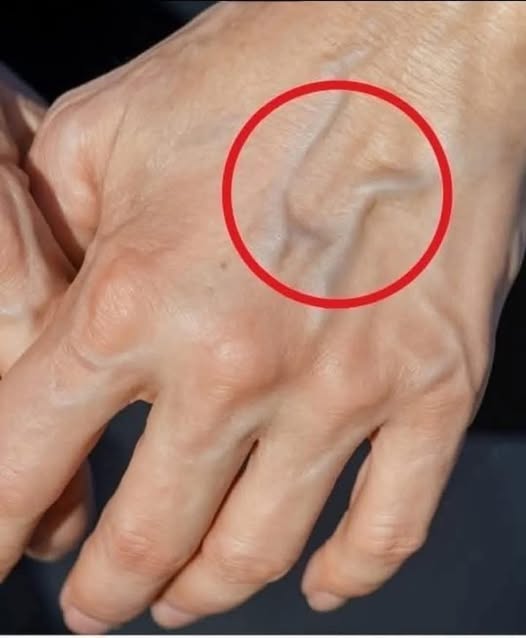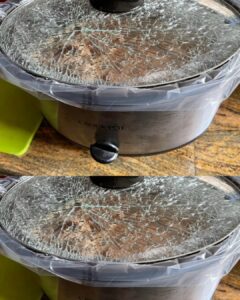
Noticing new veins suddenly popping up on your arms, legs, chest, or even hands can be surprising—and sometimes a little unsettling. In many cases, visible veins are completely harmless and simply part of your body’s natural response to factors like exercise, aging, or even warm weather. But sometimes, they can signal an underlying issue that deserves medical attention.

Understanding the difference between normal, everyday vein changes and symptoms that require a closer look can help you take better care of your vascular health.
Why Do Veins Suddenly Become More Noticeable?
There are several common and non-serious reasons your veins may become more visible:
1. Low Body Fat
When fat beneath the skin decreases, there’s less “padding” to conceal your veins. This makes them more visible, especially in leaner areas like arms, legs, and torso. Athletes or people who’ve recently lost weight often notice this effect.
2. Exercise & Weight Training
During physical activity, blood flow increases and veins expand to supply muscles with oxygen. Over time, muscle growth pushes veins closer to the skin’s surface, creating that familiar “vascular” look—often celebrated in fitness circles.
3. Hot Weather
Warm temperatures cause your blood vessels to dilate as your body works to cool itself. This natural process can make veins temporarily stand out more in your arms and legs.
4. Aging
As we age, skin becomes thinner and loses elasticity. With less collagen and fat under the skin, veins naturally show through more easily.
5. Hormonal Changes
Pregnancy, menopause, or hormone therapy can all affect circulation and blood vessel appearance. During pregnancy, for example, increased blood volume can cause new veins to surface, particularly in the legs.
When to Be Concerned About Sudden Vein Visibility
While most cases are harmless, there are times when suddenly visible veins can indicate something more serious. Here are red flags to watch for:
1. Veins Appearing Without an Obvious Reason
If you haven’t lost weight, exercised more, or been in hot weather—and new veins suddenly appear—it may signal a circulation or vascular issue.
2. Pain, Swelling, or Redness
Visible veins accompanied by tenderness, warmth, or swelling could indicate phlebitis (vein inflammation) or deep vein thrombosis (DVT)—a dangerous blood clot that requires immediate medical care.
3. Veins That Feel Hard or Rope-Like
If veins feel firm to the touch instead of soft and compressible, this can be a sign of clotting or vein damage.
4. Skin Changes Around the Veins
Discoloration, sores, or skin thickening near visible veins may suggest chronic venous insufficiency, a condition where veins struggle to send blood back to the heart.
5. Accompanying Shortness of Breath or Chest Pain
If new veins appear alongside symptoms like chest pain, dizziness, or difficulty breathing, seek emergency care immediately—these may be signs of a blood clot that has traveled to the lungs (pulmonary embolism).
What You Can Do About Visible Veins
If your veins are more visible due to natural causes, there’s often no need to worry. But here are some steps to manage or improve vein health:
- Stay active: Regular walking or movement helps circulation.
- Elevate your legs: This can reduce swelling and vein pressure.
- Wear compression stockings: These help support blood flow in the legs.
- Stay hydrated: Proper hydration improves blood volume and circulation.
- Maintain a healthy weight: Less pressure on your veins means fewer issues over time.
When to See a Doctor
Seek medical advice if:
- Veins appear suddenly without lifestyle changes.
- You experience pain, swelling, or redness.
- Veins feel hard or rope-like.
- There are skin changes or sores around visible veins.
- You have a family history of blood clots or vascular disease.
Frequently Asked Questions (FAQ)
Are suddenly visible veins always a problem?
Not always. In most cases, veins show up due to exercise, low body fat, or aging. But if other symptoms are present, it’s best to get checked.
Can dehydration cause veins to pop out?
Yes—when you’re dehydrated, blood volume decreases slightly, which can make veins appear more prominent.
Are varicose veins dangerous?
Most varicose veins are harmless but can cause discomfort. Severe cases may require treatment to prevent complications.
What’s the difference between spider veins and varicose veins?
Spider veins are small, thin, and web-like near the surface. Varicose veins are larger, bulging, and often painful.
Final Thoughts
Suddenly visible veins can be perfectly normal—or they can signal an underlying issue that needs medical attention. The key is to pay attention to context and symptoms. If your veins are showing up after exercise, weight changes, or hot weather, they’re usually harmless. But if they appear with pain, swelling, or no clear cause, it’s worth checking with your doctor.
Your body often gives small signals before bigger problems arise—listening to those signals can help you stay ahead of potential issues.





Leave a Reply